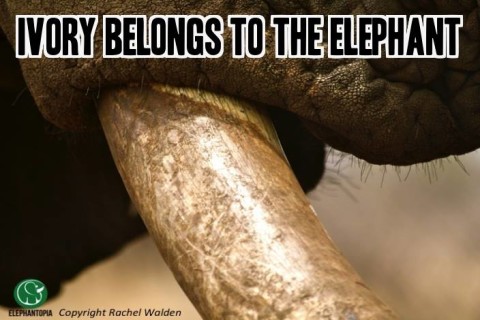The Problem with Grey
This is no grey fact: China is “one of the world’s largest consumers of wildlife products, from elephant ivory and shark fin to tiger bone and rhino horn, and animal rights groups have long campaigned to stop the trade in endangered animal parts, both online and offline.” The parts from some endangered species are worth more than gold or cocaine.
At $10 billion a year, illegal wildlife makes up the world’s fifth-largest illicit market behind drugs, counterfeit products, trafficked people and smuggled oil. Shared from http:/http://www.economist.com/news/international/21607891-parts-some-endangered-species-are-worth-more-gold-or-cocaine-bitter-pills
China’s emerging “nouveau riche” class does not help the situation with their attitude that “the more endangered, the better:”
“They eat anything and everything, and it seems that the more endangered an animal they eat, the more of a boost they get to their personal prestige,” Grace Ge Gabriel, regional director for China at the International Fund for Animal Welfare (IFAW), told RFA. “And this problem has become more and more serious in recent years.”
But this is where things get a little grey. Ge Gabriel claims the use of farmed animals to satisfy demand for medicinal animal parts has confused the general public, in spite of growing awareness of environmental and animal protection issues across the country.
“Some of the big tiger farms in China raise tigers specifically to sell tiger-related products,” Ge Gabriel said. “While it’s illegal in China to trade in wild tiger parts, the law allows trade in farmed tiger parts. This has created a grey area in the market for tiger parts in China, and it has caused a great deal of confusion for consumers, because it’s hard for them to be sure whether the tiger products come from wild or farmed animals,” she said. “This has had a bad effect on public education about endangered species.”
And this is why there can be no grey area when it comes to elephants. With one elephant being slaughtered for it’s ivory every 15 minutes, the entire species is on the brink of annihilation. At this rate, there is a real possibility that the wild roaming African Elephant will be extinct by 2025 due in part to the “grey area” of what is “legal” ivory and what is “illegal ivory.” The lack of public awareness of the effects of certain types of trade has been exported to other countries in Africa, where Chinese demand is blamed for fueling elephant poaching for illegal ivory.
The answer?
1) Stop the ivory trade.Return to the full ban on the sale of ivory established in 1989 by CITIES. End the confusion of what is and isn’t legal ivory. In 1979 there was an estimated 1.3 million elephants in Africa. Today conservative estimates are that 400,000 elephants are left.
2) Address the involvement of international criminal syndicates by means of strong law enforcement at both national and international levels along the full extent of the supply - demand chain.
3) Close down domestic ivory markets to accompany the international trade ban by CITIES.
4) Educate the consumer. When the buying stops, the killing can too. It is estimated that 70% of Chinese public thought that ivory comes from teeth that fall out from the elephant, not from killing the elephant.
4) Sign the Pledge - and invite a friend to as well. Never buy ivory, spread the word to others, and then help make a difference in the life of elephant orphans, victims of the ivory trade and the future of tomorrow’s wild African elephants by DONATING TODAY.
(Quotes and facts in this blogpost shared from RFA)






